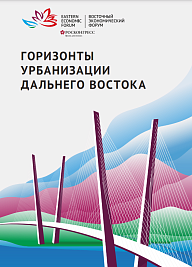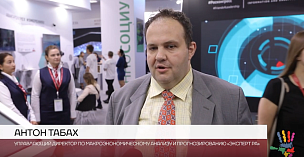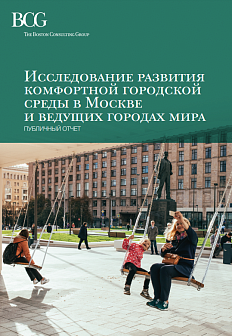The analytical report prepared by the team of authors of the NTI Central Committee on Big Data on the basis of Lomonosov Moscow State University with the support of the Roscongress Foundation for the VII Eastern Economic Forum 2022 analyzes the prospects for urbanization of the Russian Far East.
Analysts of the Roscongress Foundation have identified the main theses of this study, accompanying each of them with a relevant piece of video broadcasts of panel discussions held as part of the business programs of key events held by the Foundation.
The Far East of Russia faces a large number of ambitious tasks, the solution of which can be facilitated by an increase in the level of urbanization of the macroregion.
The intensive development of the Far East region is considered one of the most important priorities of the Government of the Russian Federation. Achieving economic growth, accelerating the pace of urbanization, together with the technological development of the Far East, is necessary to improve the quality of life of the population. First of all, this can be achieved by ensuring the competitiveness of investment conditions and business development in the Far Eastern Federal District. Important drivers for the development of the Far East are the increase in the investment attractiveness of key sectors of the region’s economy (non-ferrous metallurgy, extraction of precious metals and stones, mining, fishing, forestry and woodworking industries, oil and gas production, mechanical engineering), the creation of infrastructure for the implementation of new investment projects, in including technological, as well as the development of tourism infrastructure.
Achieving the set goals can be significantly intensified through the concentration of productive forces, intellectual potential and financial resources in points of growth. At the same time, the prospect of urbanization of the Far East is reinforced by the fact that this macro-region has impressive reserves for growth in terms of the development of transport and energy infrastructure both between the largest economic centers and within the regional transport network. Providing affordable means of transport mobility, together with the timely regulation of energy tariffs in the short and medium term, can contribute to an increase in the number of innovative infrastructure projects in the Far East. Attracting private investment and, as a result, the development of tourism infrastructure and the creation of high-tech industries based on advanced technologies, are the «target indicators» of the tasks of overcoming barriers to the socio-economic development of the Far East.
Urbanization of the Far East can be carried out based on the integration of individual cities into single socio-economic systems.
The most prominent example of such processes is «Greater Vladivostok» — the agglomeration of Vladivostok, Nakhodka, Ussuri and Artemovsky urban districts, connected by intensive economic, economic and social processes. As of 2022, the total population of Greater Vladivostok is 1.08 million people. with an area of 5,053.82 km2. The population density in this agglomeration is 457.45 people/km2. Thanks to these parameters, Greater Vladivostok can be considered the first million-plus city in the history of the Far East, which gives special meaning to integration processes due to the repeatedly emphasized importance of the development of the Far Eastern Federal District in the context of the national development and security of the Russian Federation.
The construction and development of cities in the Far East should be carried out on an integrated basis, considering social, economic and environmental development goals.
The remoteness of the Far East from the main economic centers of the Russian Federation, the difficult landscape and climatic conditions for a long time made it difficult to attract investment for the development of this territory. As part of the formation of the image of the «city of the future», including within the framework of the urbanization of the Far East, four groups of criteria should be distinguished, the development of which is fundamental:
• urban development;
• economic condition;
• sustainable development;
• industry development.
We also invite you to familiarize yourself with other materials posted in special sections of the Roscongress Information and Analytical System Far East, Regional policies and Location economics dedicated to the development of Russian regions.






